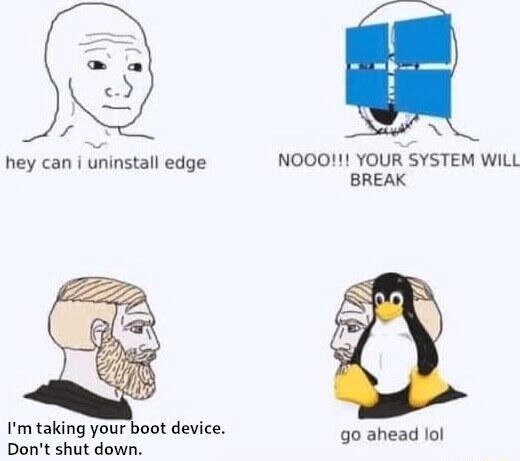Me learning Linux:
I have no idea what the difference between systemd-boot and grub.
Also, I'm not going to check which one is being used, I'll just remove the one I don't like
Linux:
Get after it chief
Why did I have both installed? No idea. Did I have to make and use a recovery USB? Absolutely.

